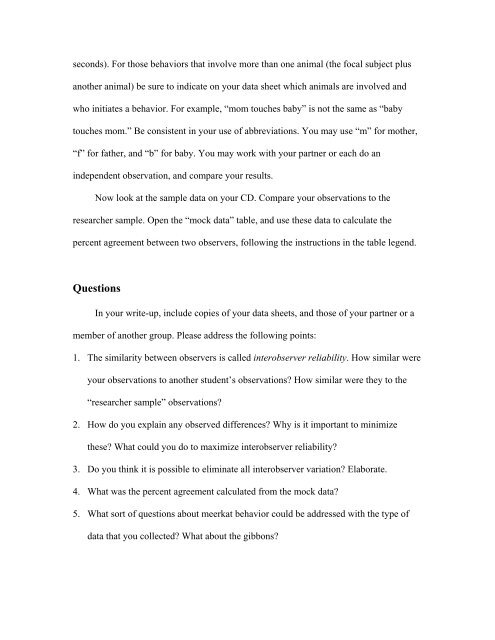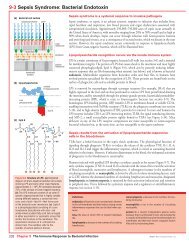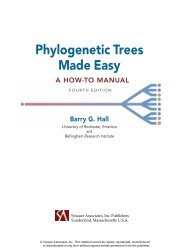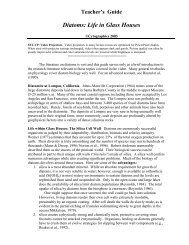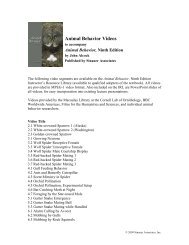Learning the Skills of Research:
Learning the Skills of Research:
Learning the Skills of Research:
You also want an ePaper? Increase the reach of your titles
YUMPU automatically turns print PDFs into web optimized ePapers that Google loves.
seconds). For those behaviors that involve more than one animal (<strong>the</strong> focal subject plus<br />
ano<strong>the</strong>r animal) be sure to indicate on your data sheet which animals are involved and<br />
who initiates a behavior. For example, “mom touches baby” is not <strong>the</strong> same as “baby<br />
touches mom.” Be consistent in your use <strong>of</strong> abbreviations. You may use “m” for mo<strong>the</strong>r,<br />
“f” for fa<strong>the</strong>r, and “b” for baby. You may work with your partner or each do an<br />
independent observation, and compare your results.<br />
Now look at <strong>the</strong> sample data on your CD. Compare your observations to <strong>the</strong><br />
researcher sample. Open <strong>the</strong> “mock data” table, and use <strong>the</strong>se data to calculate <strong>the</strong><br />
percent agreement between two observers, following <strong>the</strong> instructions in <strong>the</strong> table legend.<br />
Questions<br />
In your write-up, include copies <strong>of</strong> your data sheets, and those <strong>of</strong> your partner or a<br />
member <strong>of</strong> ano<strong>the</strong>r group. Please address <strong>the</strong> following points:<br />
1. The similarity between observers is called interobserver reliability. How similar were<br />
your observations to ano<strong>the</strong>r student’s observations? How similar were <strong>the</strong>y to <strong>the</strong><br />
“researcher sample” observations?<br />
2. How do you explain any observed differences? Why is it important to minimize<br />
<strong>the</strong>se? What could you do to maximize interobserver reliability?<br />
3. Do you think it is possible to eliminate all interobserver variation? Elaborate.<br />
4. What was <strong>the</strong> percent agreement calculated from <strong>the</strong> mock data?<br />
5. What sort <strong>of</strong> questions about meerkat behavior could be addressed with <strong>the</strong> type <strong>of</strong><br />
data that you collected? What about <strong>the</strong> gibbons?


